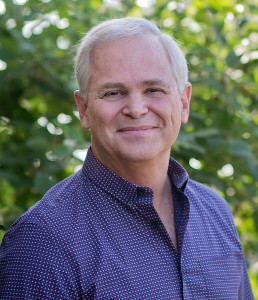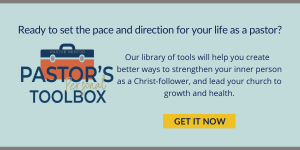 We changed our service times awhile back.
We changed our service times awhile back.
And so far the only bombs going off are over in the impact area at Camp Pendleton.
We’re shifting from a Sunday morning service line up of 8:00, 9:30, and 11:15 to 8:30, 10:00, and 11:30.
I’m sure you’re faced with making changes. Some go smoothly, while others blow up in your face.
I’ve been studying the art of change management lately and wanted to share a process with you that could save you a lot of grief the next time you think about a change in your church’s programs or procedures.
Whether you are considering a large-scale revolutionary change, or a more moderate evolutionary improvement, here are 7 ideas that will help you pro-actively lead change.
Next week, I’ll give you strategies for working with the opponents to change in your church.
7 Strategies to Lead People through Change
1. Think it Through
This exercise from Bobb Biehl will help you think through the benefits, recognize the roadblocks, and consider the emotional reaction. Do this exercise for yourself first to help you overcome your personal barriers to change. Then do it again with the people in mind who will be primarily affected by the change.
- List the advantages of the change.
- List the disadvantages of the change.
- List the psychological impact.
The advantages and disadvantages are the logical side of the issue. The psychological side anticipates the emotional reactions and the resistance you will encounter.
If you hesitate to suggest change because you were stung the last time you tried, then the first person you need to get onboard is yourself. These lists will help you think about the change both rationally and emotionally.
“Change represents both possible opportunity and potential loss.” Bobb Biehl
2. Test the Water
My colleague across town, Larry Osborne, suggests that you touch base with a few leaders in your church to try out the idea before you roll it out. “We’re thinking about tweaking our service times because… What are your thoughts?”
Listen carefully to their responses. You are not in persuasion mode yet. You are seeking to listen and understand. What are their concerns? Probe for ideas and solutions.
Talking with a few leaders will help you improve your idea and learn how to communicate it effectively. Then it’s time to take it to next circle of people.
3. Build a Coalition
You want to know that you have a network of leaders across the church who support the idea. There is a practice in change management called mapping. Think in advance about how people will respond. People will fall into these groups:
- Those who agree that the change is best for the church.
- Those who are in favor of the change because they are leaders and they like to see things move forward.
- Those who can be persuaded that the change is beneficial.
- Those who don’t like things to change. Period.
Plan on a series of meetings, lunches, and phone conversations.
The conversations should be one-on-one so you can answer their questions and connect with their motivation. Help them understand the reasons for the change. Cast vision for the benefits to the church. Ask them for their support.
Most everyone else will follow the lead of those who support the idea. Carey Nieuwhof says that 10% will oppose you. We’ll talk next week about how to work through the change with them. His point is that 10% shouldn’t get to hold up the church.
4. Plan your Communication
It only feels like over communicating to you. People need to hear about the change repeatedly before it sinks in.
We started our change communication plan with a “we’re thinking about doing this” survey. We put an insert in the bulletin for two weekends asking the congregation which of the new service times they would attend. They could give us their name and contact info if they wanted to talk with a pastor about it.
This accomplished several things: it surveyed the church to get data on how many people would attend each of the new services times; it gave people a way to express that they were onboard; and it gave people who would need more dialogue an opportunity to ask for a conversation.
Work out a communication plan that includes the ways you will communicate, the dates the communication goes out, and who is responsible for making it happen.  In addition to the survey in our weekend bulletin, we are announcing it in weekend services, and we distributed Invite Cards with the new service times. We put it on our website, and we will announce it in Friday’s email to everyone. And we are planning a continental breakfast for the next few months for the people who show up thirty minutes early because they came at the old service time.
In addition to the survey in our weekend bulletin, we are announcing it in weekend services, and we distributed Invite Cards with the new service times. We put it on our website, and we will announce it in Friday’s email to everyone. And we are planning a continental breakfast for the next few months for the people who show up thirty minutes early because they came at the old service time.
5. Explain the Why
Your congregation will want to know more than the what; they need the why of the change. They need more than the logistics of the change; they need an emotional connection to get onboard.
Cast vision by painting a picture of what it’s going to look like down the road because of the change. Not twenty years down the road, but three years. Not only three years, but three months, too.
Experts say, and we’ve all seen it, that people are self-centered and will want to know the WIIFM (What’s In It For Me). It will be disguised as concern for the church and for others, but don’t miss the opportunity to speak to their fears. Change makes people feel uncomfortable and some will experience loss, so be able to paint a verbal picture of the desirable future that you will reach because of the change.
For our service time change, we have communicated that spreading our attendance more evenly across all our services will open seats in the more crowded services. Their family, friends, and co-workers will find that there is a place for them at church, too. Give them a reason that resonates for why you are making the change.
6. Shrink the Change
The Heath brothers say in Switch that it helps people to adapt to change when they see it as not a big deal.
One way that we have shrunk the change for the people who attend the 11:15 service – which is moving to 11:30 – is to point out conspiratorially that we’ve noticed that they come at 11:30 already. We want to avoid them switching to an earlier service, so we’re pointing out, with an elbow nudge, that an 11:30 start time is probably no big deal.
To shrink the change is to show how they are already 20% of the way to the new way of doing things.
Your change may be best framed as something that you are going to try. It’s easier for everyone to see that they can flex, we will try it, and if it doesn’t work, we will go back. You aren’t planning to need to go back, but it makes it easier for people if they know there is an exit plan.
7. Foster Resilience
A church is resilient when its members can adapt to change without blowing up and draining away momentum. Change experts list these qualities that as a leader of change you can model, and seek to develop in your congregation:
- Learn to be positive, focused, flexible, organized, and proactive.
- Display a sense of security and self-assurance; see life as complex, but filled with opportunity.
- See disruptions as the result of a changing world.
- Recognize that change is uncomfortable but it offers hidden opportunities.
- Know there are important lessons to learn from challenge; see life as generally rewarding.
- Focus on what they want to achieve.
- Maintain a strong vision that gives purpose and guidance.
- Be adaptable when responding to uncertainty.
- Believe that change is a manageable process; have a high tolerance for ambiguity.
- Feel empowered during change.
- Rely on healthy relationships for support.
- Display patience, understanding and humor when dealing with change.
The more resilience you and your church develop the easier it becomes to get better at reaching your city. I’ve included this worksheet to make it easy to process how you can use these seven strategies to lead people-friendly change in your church.
Now What?
We have a tool that will capture these strategies and help you work out how they apply in your situation. You can find it in the Pastor’s Personal Toolbox. It’s a library of our best tools and resources — all in one place. Tap below to learn all about it, and get the worksheet that will help you lead people-friendly change in your church..
 Hal Seed is the founding and Lead Pastor of New Song Community Church in Oceanside, CA. He mentors pastors who want to lead healthy, growing churches with resources at www.pastormentor.com.
Hal Seed is the founding and Lead Pastor of New Song Community Church in Oceanside, CA. He mentors pastors who want to lead healthy, growing churches with resources at www.pastormentor.com.
Start Here to learn more about the resources available for you at PastorMentor.

Leave a Reply